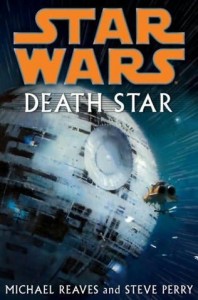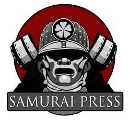Death Star
 Death Star by Michael Reaves and Steve Perry is not a Star Wars novel that just happens to be written by Reaves and Perry — it’s a novel by Reaves and Perry that just happens to be set in the Star Wars universe. That’s an important distinction, and may explain why fans of Perry and Reaves collaborations (or of Steve Perry and Michael Reaves individually) will enjoy the novel immensely, but Star Wars fanboys may be dissatisfied. The book is, in fact, an absorbing character study of a handful of ordinary people stationed on the Death Star just prior to its completion — a TIE fighter pilot, a conscripted architect, a battle-weary surgeon (who is a character from a previous work by the same authors), a storm trooper who is also a martial arts expert, etcetera. We watch as each of these men and women (and several others) come to terms with their rationalizations for serving the Empire. As the Death Star begins taking millions of lives, each of these characters is forced to make a decision about the future.
Death Star by Michael Reaves and Steve Perry is not a Star Wars novel that just happens to be written by Reaves and Perry — it’s a novel by Reaves and Perry that just happens to be set in the Star Wars universe. That’s an important distinction, and may explain why fans of Perry and Reaves collaborations (or of Steve Perry and Michael Reaves individually) will enjoy the novel immensely, but Star Wars fanboys may be dissatisfied. The book is, in fact, an absorbing character study of a handful of ordinary people stationed on the Death Star just prior to its completion — a TIE fighter pilot, a conscripted architect, a battle-weary surgeon (who is a character from a previous work by the same authors), a storm trooper who is also a martial arts expert, etcetera. We watch as each of these men and women (and several others) come to terms with their rationalizations for serving the Empire. As the Death Star begins taking millions of lives, each of these characters is forced to make a decision about the future.
The Death Star is a setting, not a central plot point, and thus it is dealt with only in passing (though we do get a better picture of what such a large station would actually contain). There are a few interesting passages elaborating on the relationship between Darth Vader and Grand Moff Tarkin, which is not quite as two-dimensional or as clear-cut in terms of authority as it might appear in Episode IV.
Of particular interest to me was the subplot involving the chief gunner aboard the Death Star, a loyal Imperial trooper who, eager to fire “the big gun,” realizes to his horror that he has become a killer of planets after the Death Star goes operational. A few of the other characters will seem eerily familiar — particularly a cantina owner and her loyal security man — to anyone who has read Steve Perry’s work (starting with The Man Who Never Missed). The prison-planet setting in which the novel opens is particularly familiar ground for Reaves and Perry, who collaborated on the excellent The Omega Cage (which is about a prison break from a bleak, futuristic penitentiary on an inhospitable world).
Towards the end of the novel, scenes are taken verbatim from Episode IV and woven into the tales of the various characters, in some cases amplified slightly as we hear the thoughts of those involved. Given that any fan of Star Wars knows how the novel must end, it’s no mean trick that the reader will still be curious to see how this novel concludes.
I enjoyed Death Star immensely and would recommend it to both those who enjoy work in this genre and fans of Reaves and Perry specifically.

